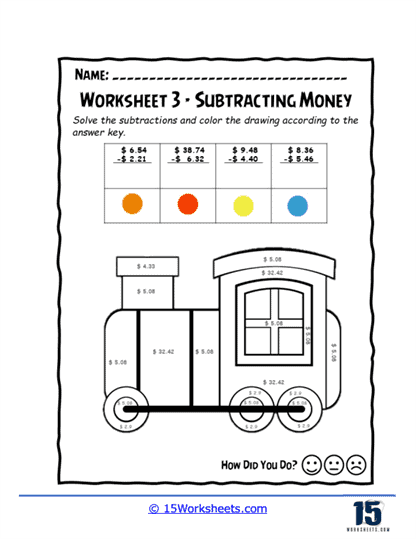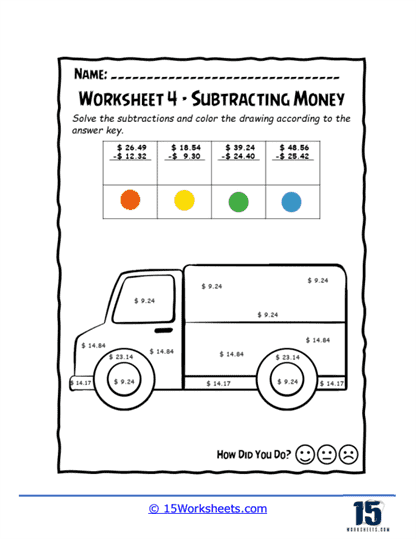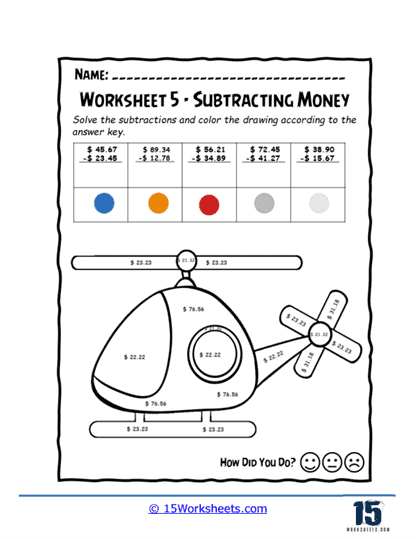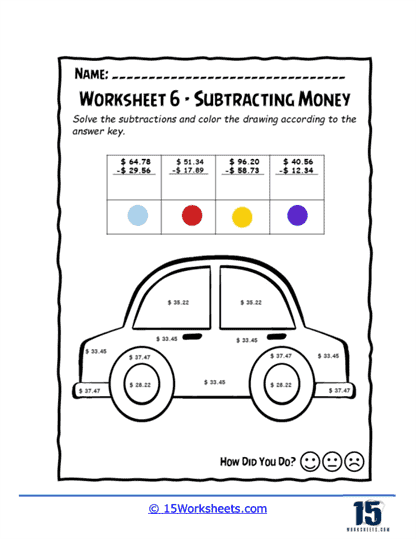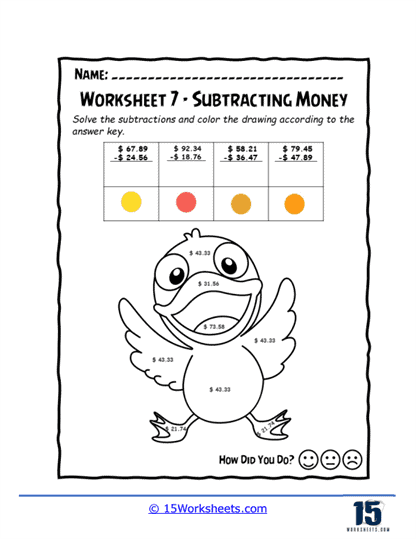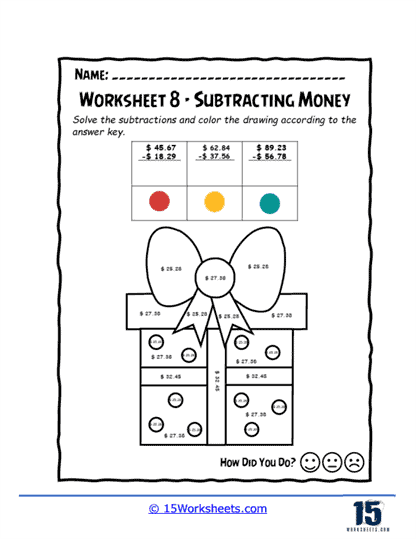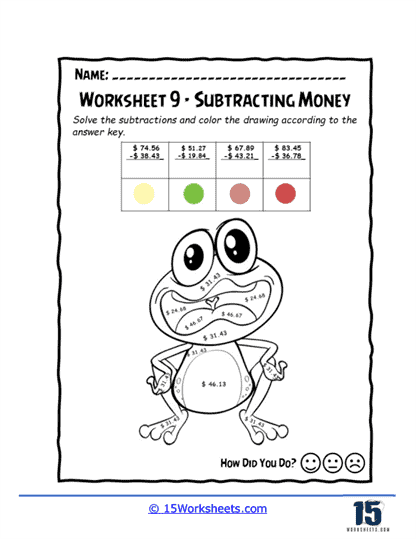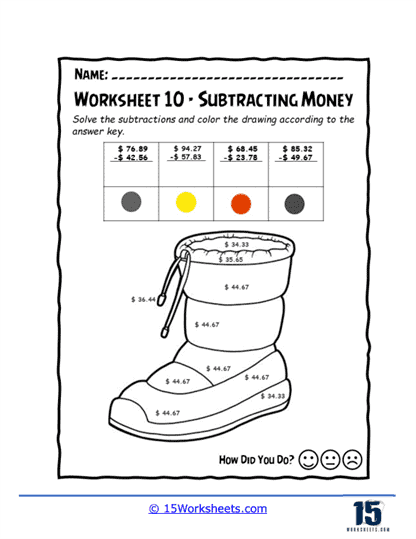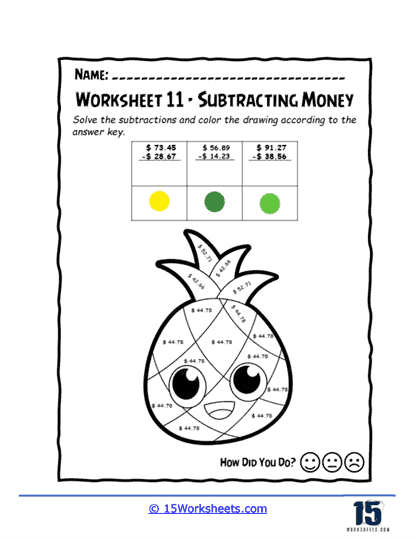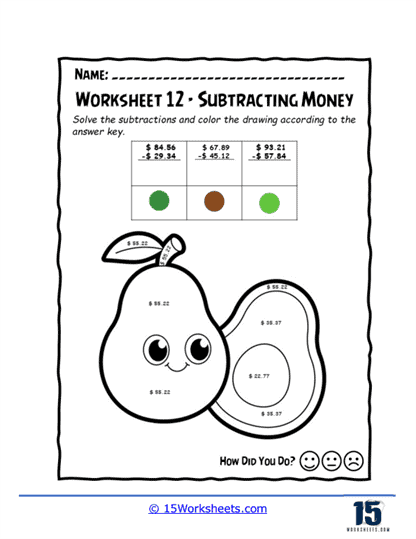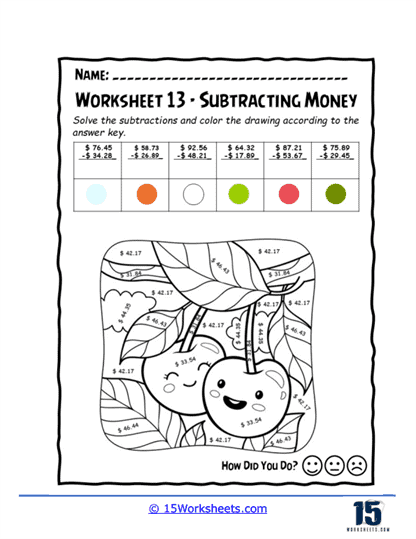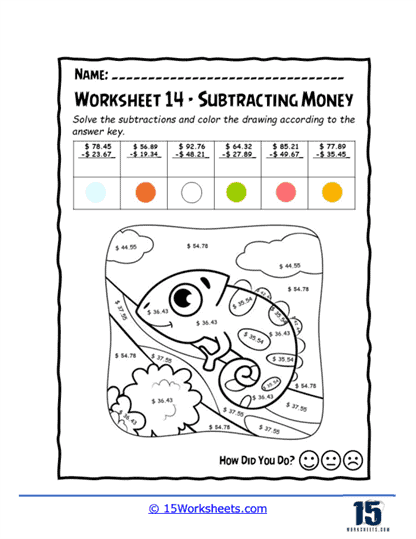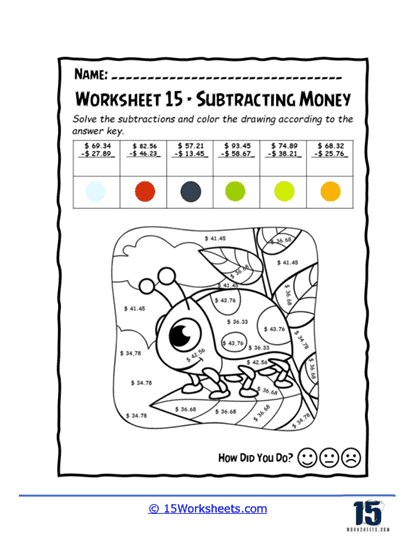Subtracting Money Worksheets
About These 15 Worksheets
These worksheets were developed to help students learn and practice the process of subtracting amounts of money. These worksheets vary in complexity, catering to different age groups and learning stages. By working through these exercises, students can enhance their understanding of basic currency handling, arithmetic, and real-world math skills. These worksheets typically include a range of exercises that simulate everyday financial transactions, making them a practical resource for developing financial literacy from a young age.
Through a variety of exercises, these worksheets teach students about handling money, making financial decisions, and applying math skills in real-world situations. Regular practice with these worksheets not only improves students’ numerical fluency and problem-solving abilities but also prepares them for a financially responsible adulthood. By integrating basic currency operations with everyday math skills, subtracting money worksheets play a crucial role in developing a comprehensive understanding of finance and arithmetic, ensuring students are well-prepared for the mathematical challenges they will face in the future.
Types of Exercises
Basic Subtraction Problems – These exercises present straightforward subtraction problems involving amounts of money. For example, students might be asked to subtract $5.25 from $10.00. The focus here is on understanding how to perform basic subtraction operations with decimal points, which represent dollars and cents.
Making Change – This type of exercise is more practical and scenario-based. Students calculate the change required from a purchase. For instance, if an item costs $7.50 and the customer pays with a $10 bill, the worksheet would ask the student to calculate the change owed to the customer. This exercise helps students apply subtraction in real-world contexts, enhancing their problem-solving skills.
Comparing Prices – These exercises ask students to compare the prices of different items or services and determine the difference in cost. This not only involves subtraction but also encourages students to think critically about value and spending decisions.
Budgeting Exercises – More advanced worksheets may include budgeting exercises where students must allocate a certain amount of money to different expenses and then subtract these from their total budget. This type of exercise prepares students for managing personal finances and understanding the importance of budgeting. Word problems combine reading comprehension with mathematical skills, presenting scenarios where students need to identify the necessary subtraction operation before solving it. For example, a problem might describe a person withdrawing a certain amount of money from a bank account and ask how much remains. This type of exercise develops critical thinking and application of subtraction in everyday situations.
Using Different Currencies – To broaden the learning experience, some worksheets incorporate exercises that require students to subtract amounts in different currencies. This introduces them to the concept of exchange rates and international transactions, adding a layer of complexity to the subtraction operation.
The Benefits of These Worksheets
These worksheets serve not only aids in the mastery of basic arithmetic but also bridges the gap between classroom theory and real-world application. These worksheets, through regular engagement, significantly enhance a student’s numerical fluency. The practice of handling numbers, particularly with decimals, becomes second nature, a skill that is indispensable for daily transactions and overall financial literacy. This fluency is the cornerstone of practical math application, ensuring students can navigate the financial aspects of their lives with confidence.
Beyond mere number manipulation, these worksheets play a crucial role in developing robust problem-solving skills. By introducing students to a variety of exercises, ranging from calculating change to tackling complex word problems, they learn to apply mathematical concepts in solving tangible problems. This not only reinforces their math skills but also prepares them to face real-life challenges with a problem-solving mindset, an invaluable skill across all facets of life.
These worksheets are instrumental in improving financial literacy. They offer students a foundational understanding of money management, encompassing the value of money, the mechanics of transactions, and the critical role of budgeting. Through these exercises, students gain insights into the economic principles that govern everyday financial decisions, laying the groundwork for responsible financial behavior in the future.
One of the most significant advantages of these worksheets is their ability to build real-world connections. By simulating real-life financial scenarios, they help students perceive the relevance and applicability of math in their daily lives. This connection is vital for reinforcing mathematical concepts and ensuring students understand the practical utility of their classroom learning. It demystifies abstract concepts, making math more approachable and relevant.



